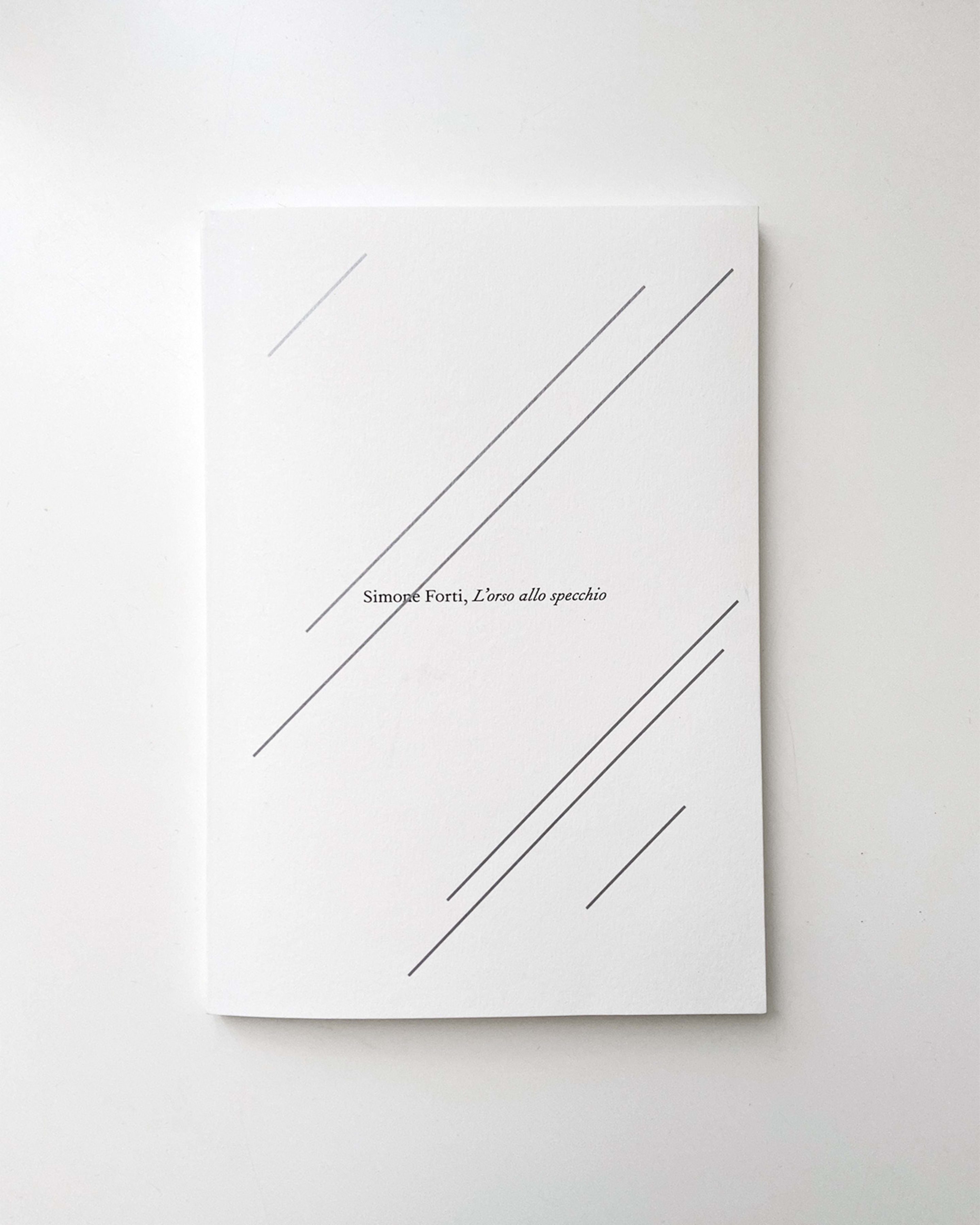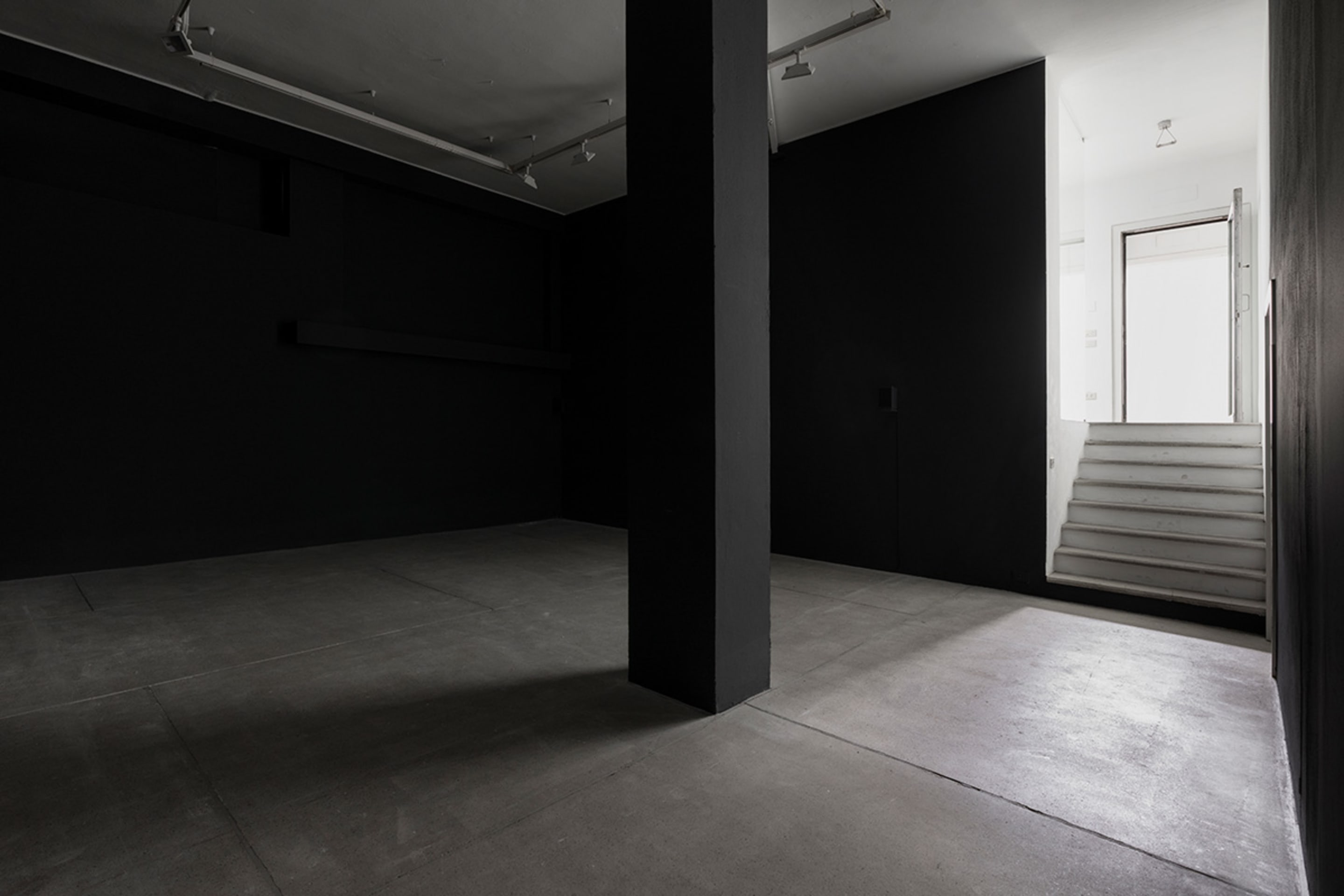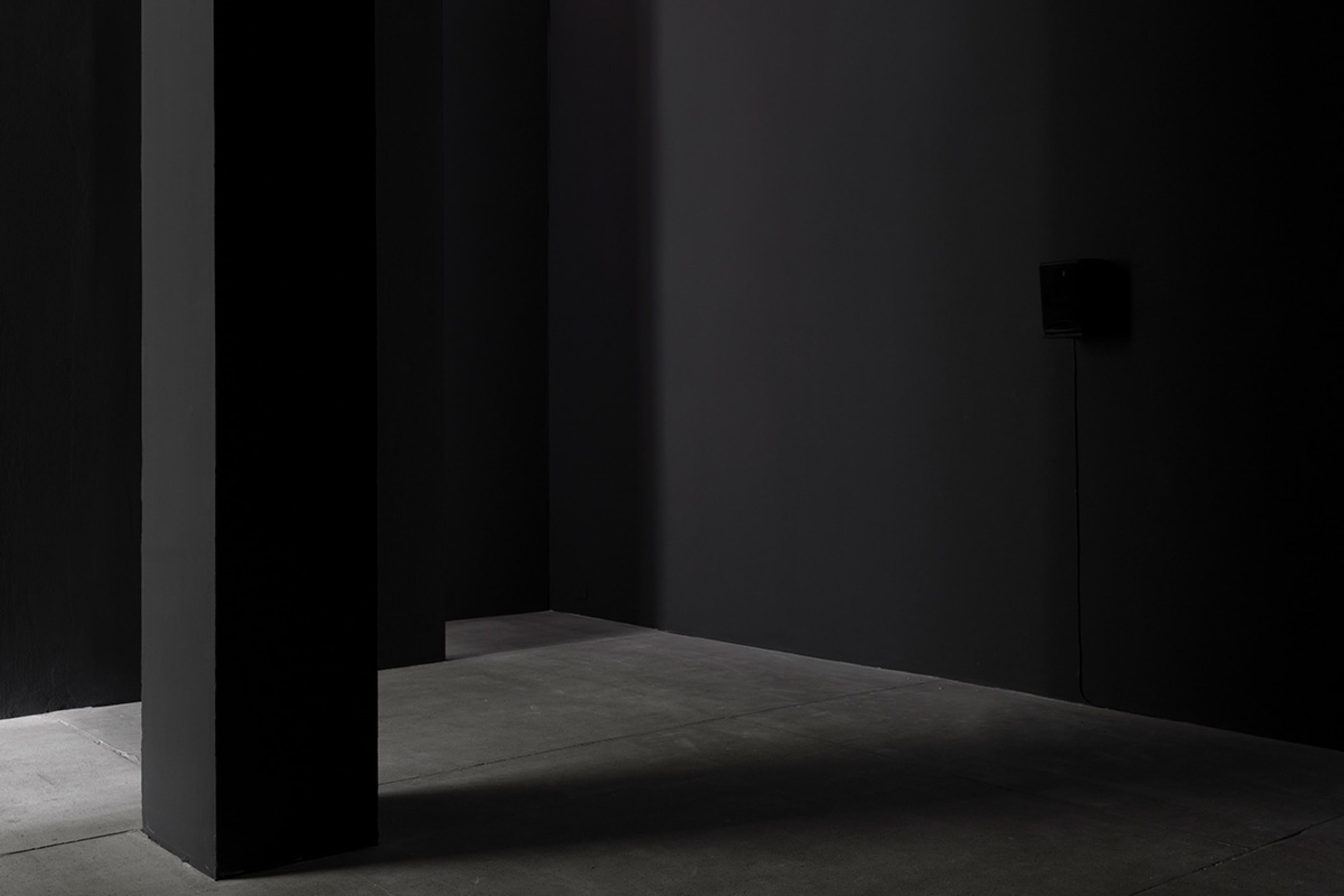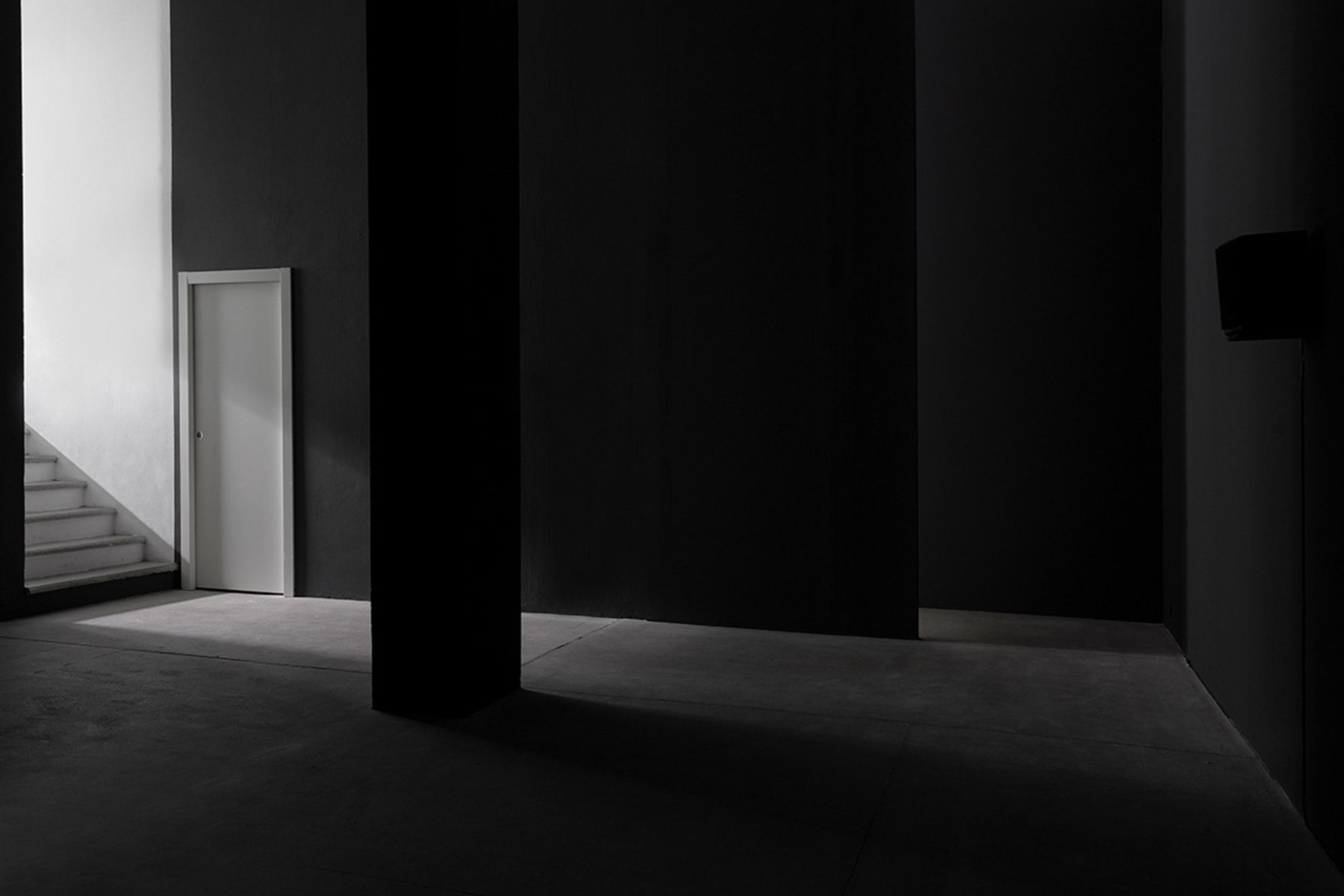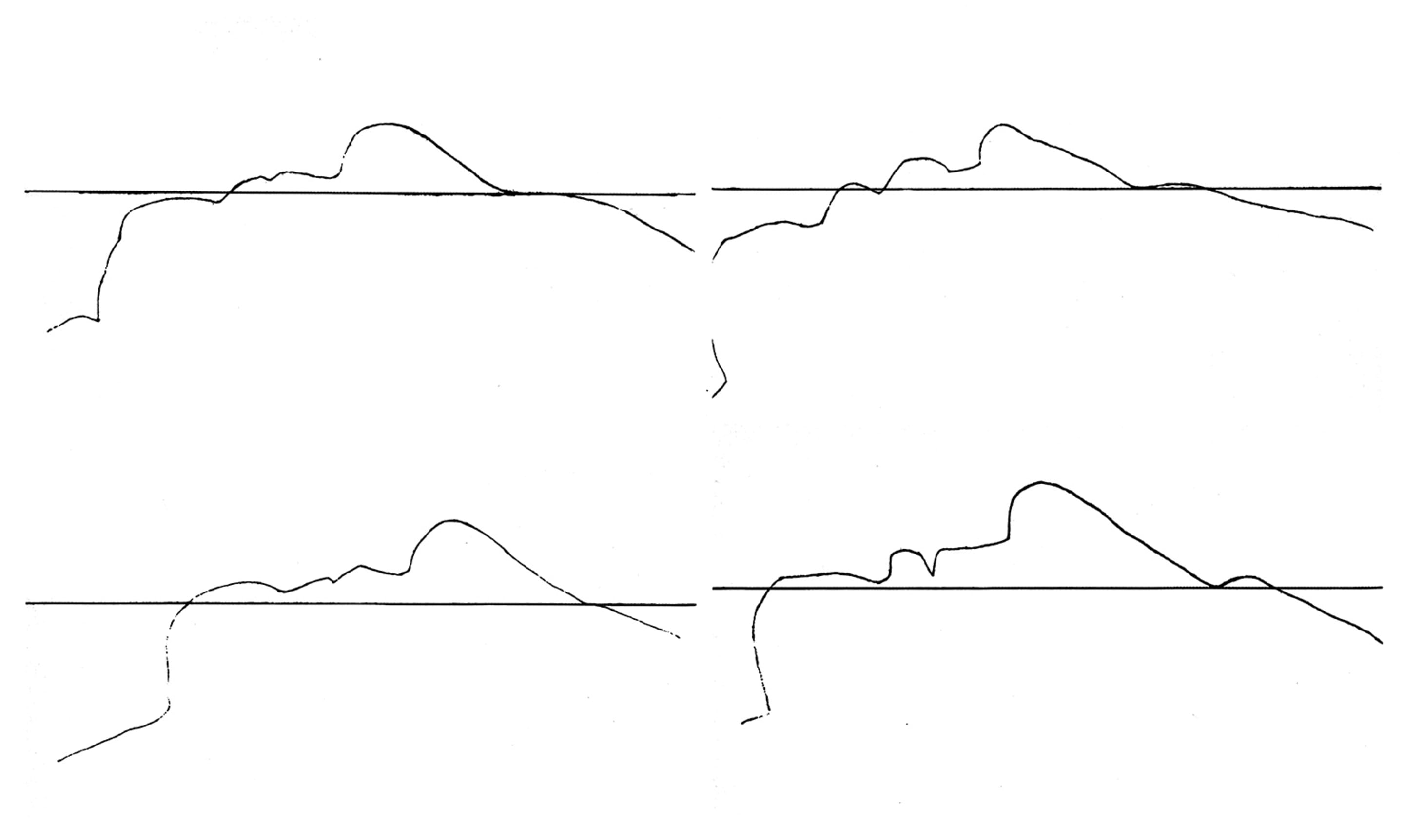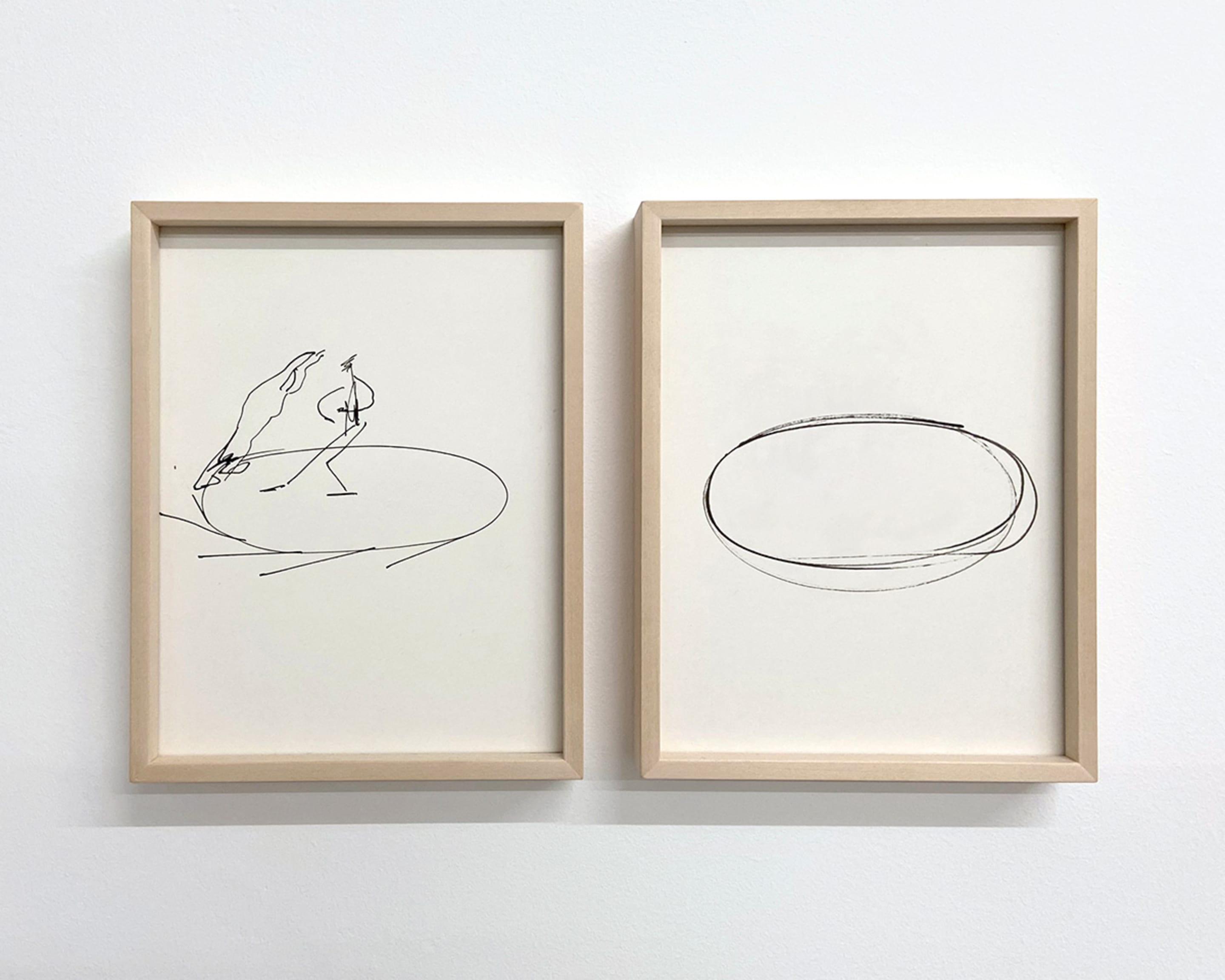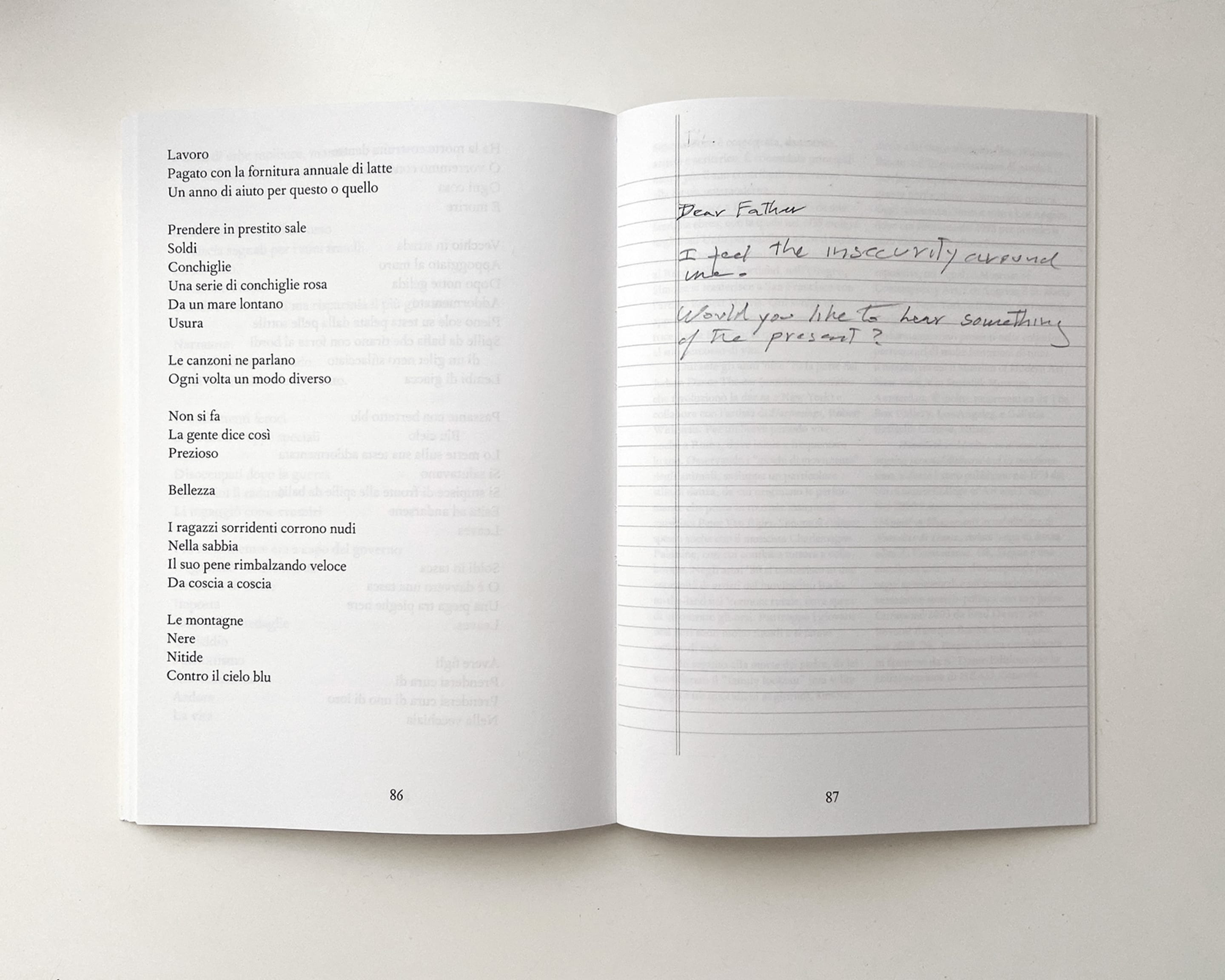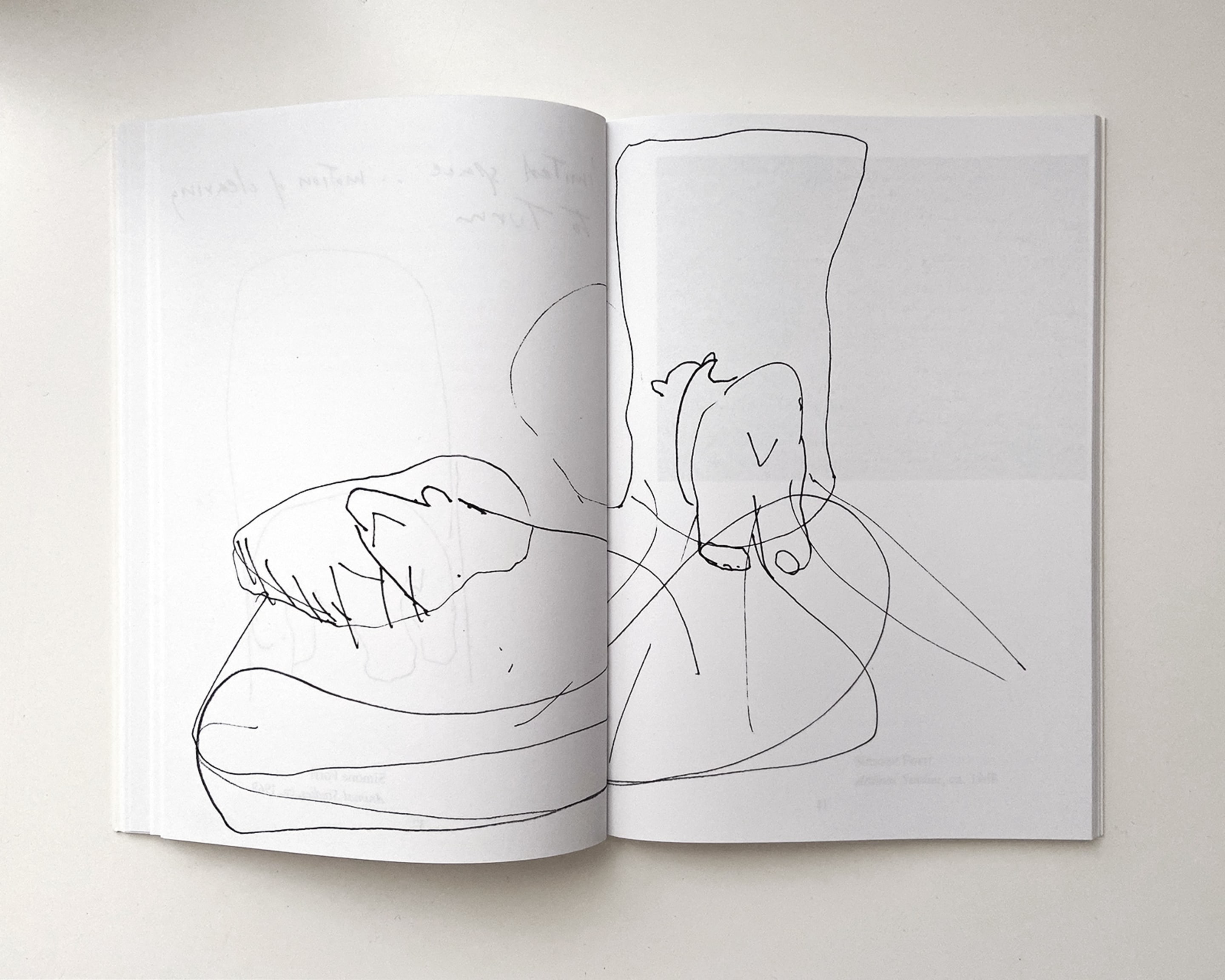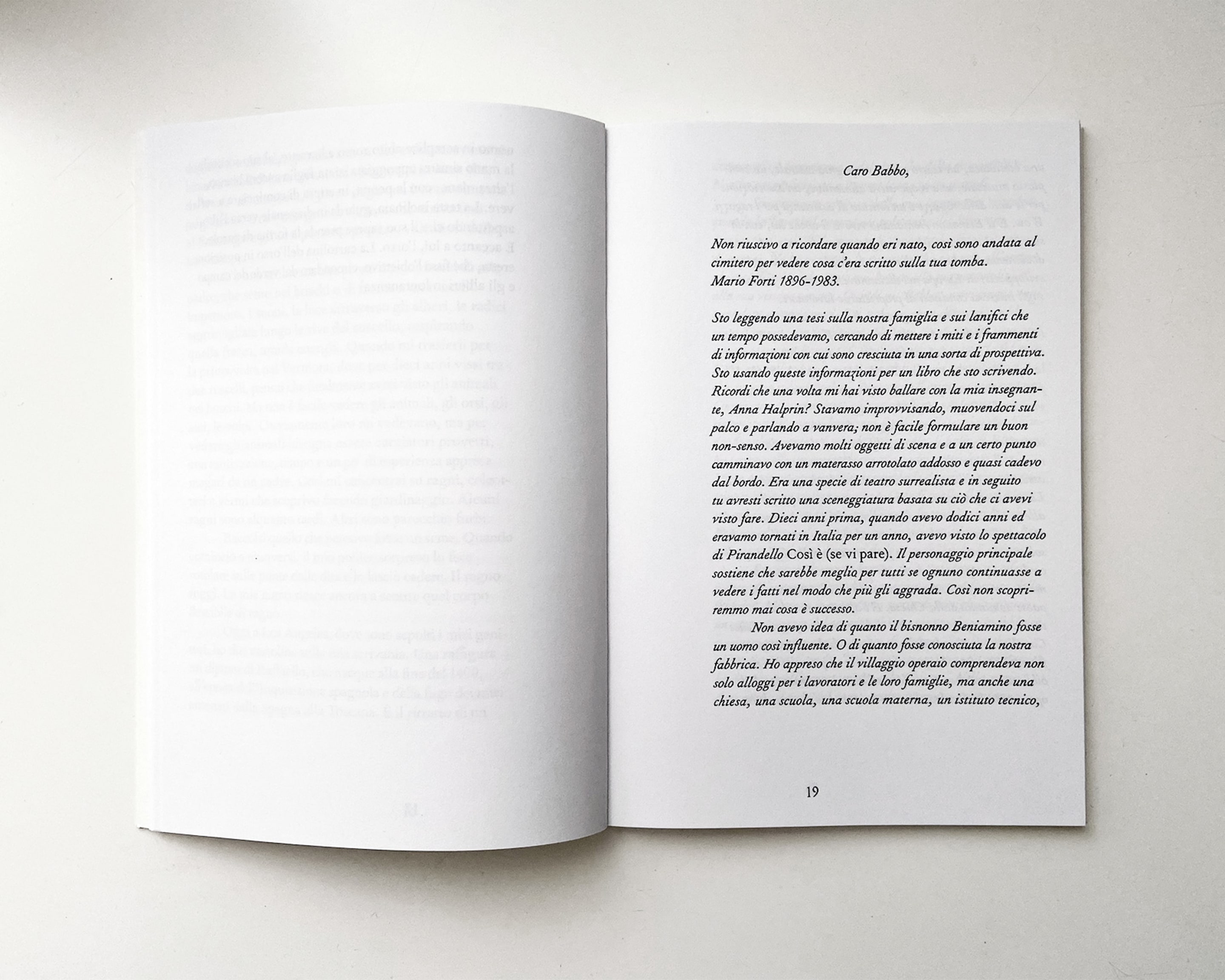Exhibition Expanded: L'orecchio di Dionisio
On the occasion of our current exhibition project L'orecchio di Dionisio, featuring sound works by Miroslaw Balka, Simone Forti, and Marcello Maloberti, we are pleased to present a series of viewing rooms expanding on these artists. The first Exhibition Expanded online presentation is devoted to LA-based artist, choreographer, dancer, and writer Simone Forti (Florence, 1935), who is present in via A. Stradella 7 with her experimental sound piece Face Tunes (1967). We look forward to welcoming you to the gallery to experience the work through September 18; scroll down to discover this viewing room's focus on Forti's relationship to music and sound.
"Face Tunes" is a piece of music played from a score. The score is a set of outlines of seven profiles of faces traced on a long roll of paper. One straight line runs along the middle of the entire scroll. This is the zero line. The profiles face upwards, the throat of one followed by the forehead of another. The bridge of each nose sits on the zero line. The score is rolled on rollers turned by a motor, and the seven faces pass by, from left to right, at about one per minute. Attached to the end of the slide whistle is a stick that reaches down to the score. The player holds the whistle parallel to the score and plays it while tracing the profiles with the stick as the faces roll by. Simultaneously, a continuous tone is being played on the tape recorder. This constant pitch has been recorded from the slide whistle, as is the zero pitch. It is the pitch the slide whistle should be making when the stick is touching the zero line. Since the profiles are traced in higher and lower pitches, these are always in contrast with the zero pitch, except for the periodic moments of convergence.
From Simone Forti, Handbook in Motion: An Account of an Ongoing Personal Discourse and Its Manifestations in Dance, 1974.
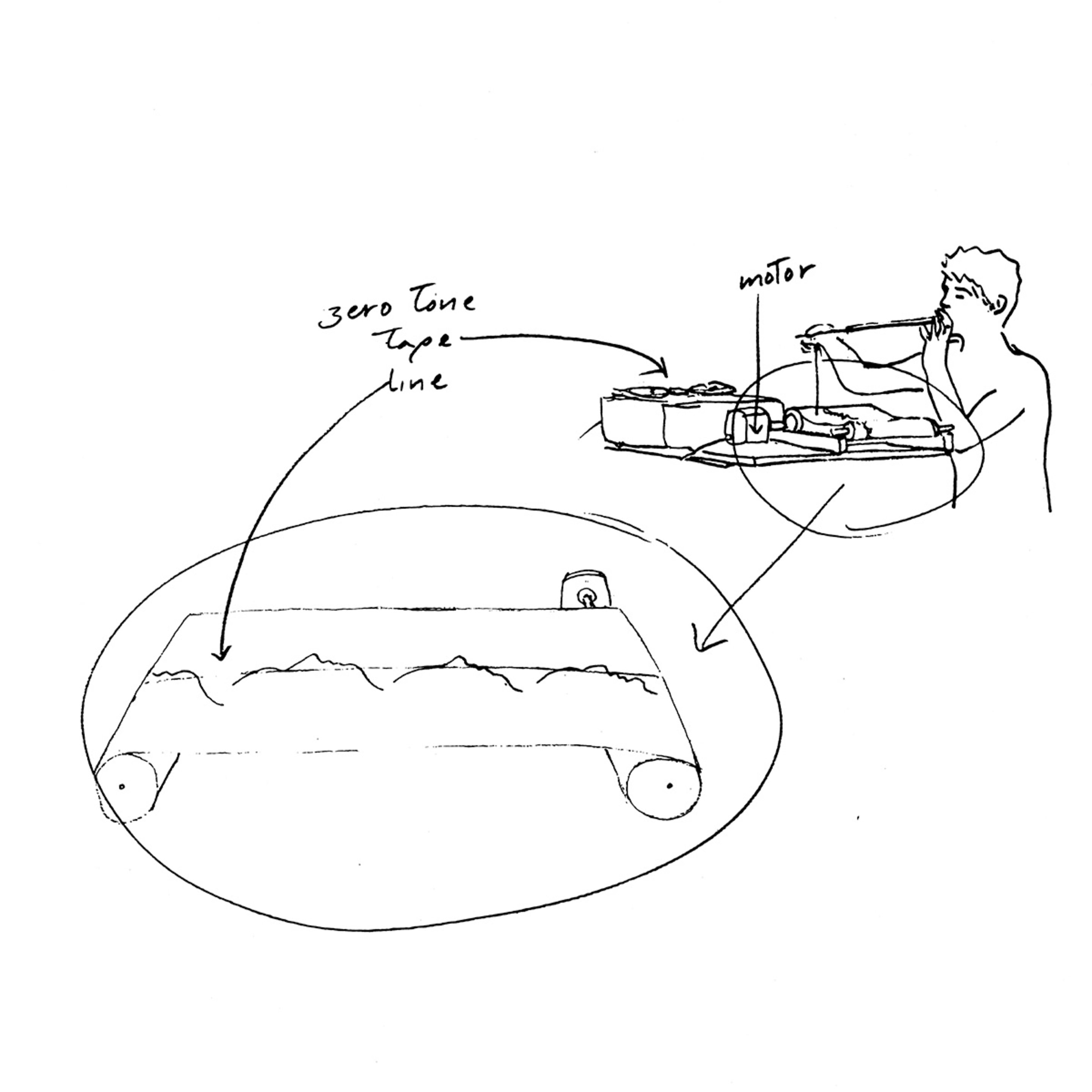
In 2012 Simone Forti participated in the exhibition Moments. A History of Performance in 10 Acts at the ZKM | Center for Arts and Media in Karlsruhe, Germany. As part of the public program related to the show, Forti was invited to do a talk where she spoke about her relation to Anna Halprin and Judson Dance Theater as well as Face Tunes, the work presented in the exhibition. At the end of the lecture the artist demonstrates the use of the modified slide whistle to read the score and perform the sound experimentation.
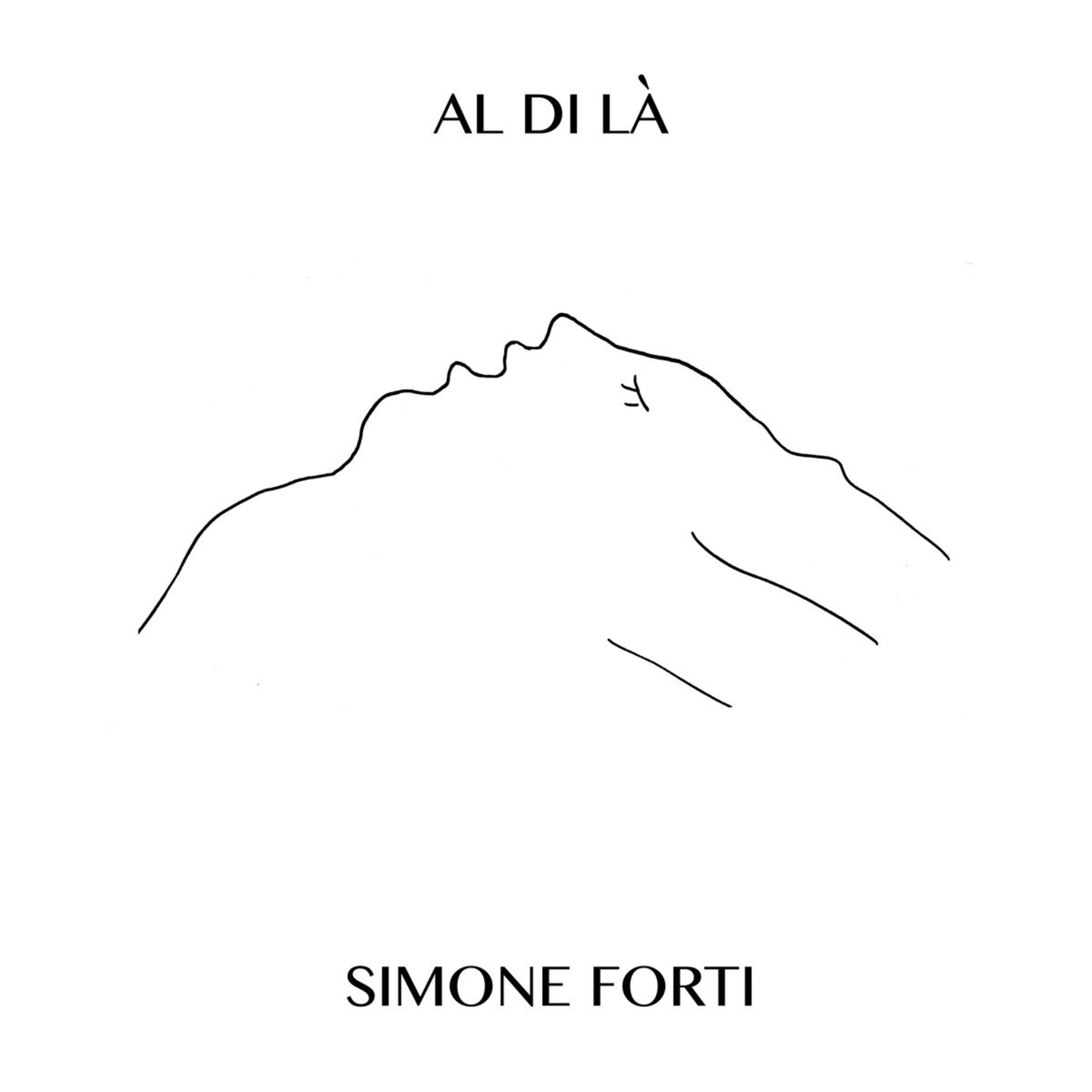
In 2018 Tashi Wada issued Al Di Là, the first full-length collection of Simone Forti's recorded works, on his imprint Saltern. The album highlights Forti’s use of her voice, folk songs, handmade instruments, and physical space in sound pieces ranging from the early ‘60s to mid-80s. The limited edition CD and digital album are available on Bandcamp.
In a recent interview published on BOMB, Forti discussed her works related to music and sound with Tashi Wada. The expansive conversation touches on key moments in Simone's life and practice, click here to read the full article.
Tashi Wada: Regarding that idea of momentum and trajectory, it feels to me that your sound works are directed but not really composed. Something gets it going and drives it on, but the materials are left to be themselves. This might relate to the Dance Constructions. You set up circumstances, but within them it’s open-ended.
Simone Forti: I’m not directing dancers to make this or that movement. Instead I’m keeping them from falling into zombie mode and keeping things from getting too interesting. I make it clear what kind of presence I’m looking for—and one clue for them is being aware of interesting compositional things happening without trying to make those interesting compositional things happen. It now occurs to me that sound may be another arbitrary object, an element I’ve brought in or that has just happened. So there hasn’t been a series of a certain kind of exploration of sound, but rather almost arbitrary ideas that came up, like Face Tunes (1967).
TW: In comparison to the rest of the pieces on Al Di Là, Face Tunes, in which you transcribe outlines of facial profiles into melodies, is interesting because it almost exists in a more conceptual space, as far as the sound goes and what the audience is hearing or experiencing.
SF: I had traced a series of faces in profile onto a scroll, which rolled by as I followed the lines with a stylus attached to a slide whistle. Originally the audience didn’t even know these were tracings of faces. They were repetitive units that were similar but different.
Throughout her decades-long career exploring movement and dance, Forti has collaborated with a number of musicians and composers, including La Monte Young and Marian Zazeela, who are featured in one of the parts of Bottom (1973) as well as Yoshi Wada, Tashi's father. Simone Forti's work with American composer and artist Charlemagne Palestine is among her most celebrated.
After meeting Palestine at CalArts in 1970, the two began collaborating on Illuminations, a series of performances based on the use of a common language between Forti’s circular motions and Palestine’s melodies. In conjunction with the choreography, Forti made a series of drawings in 1972 based on circles and numerology that functioned as scores for her and Palestine’s performances. Exploring the concept of improvisation and the dynamics of the circle, including centrifugal and centripetal forces, the drawings illustrate the duality of mental process and movement.
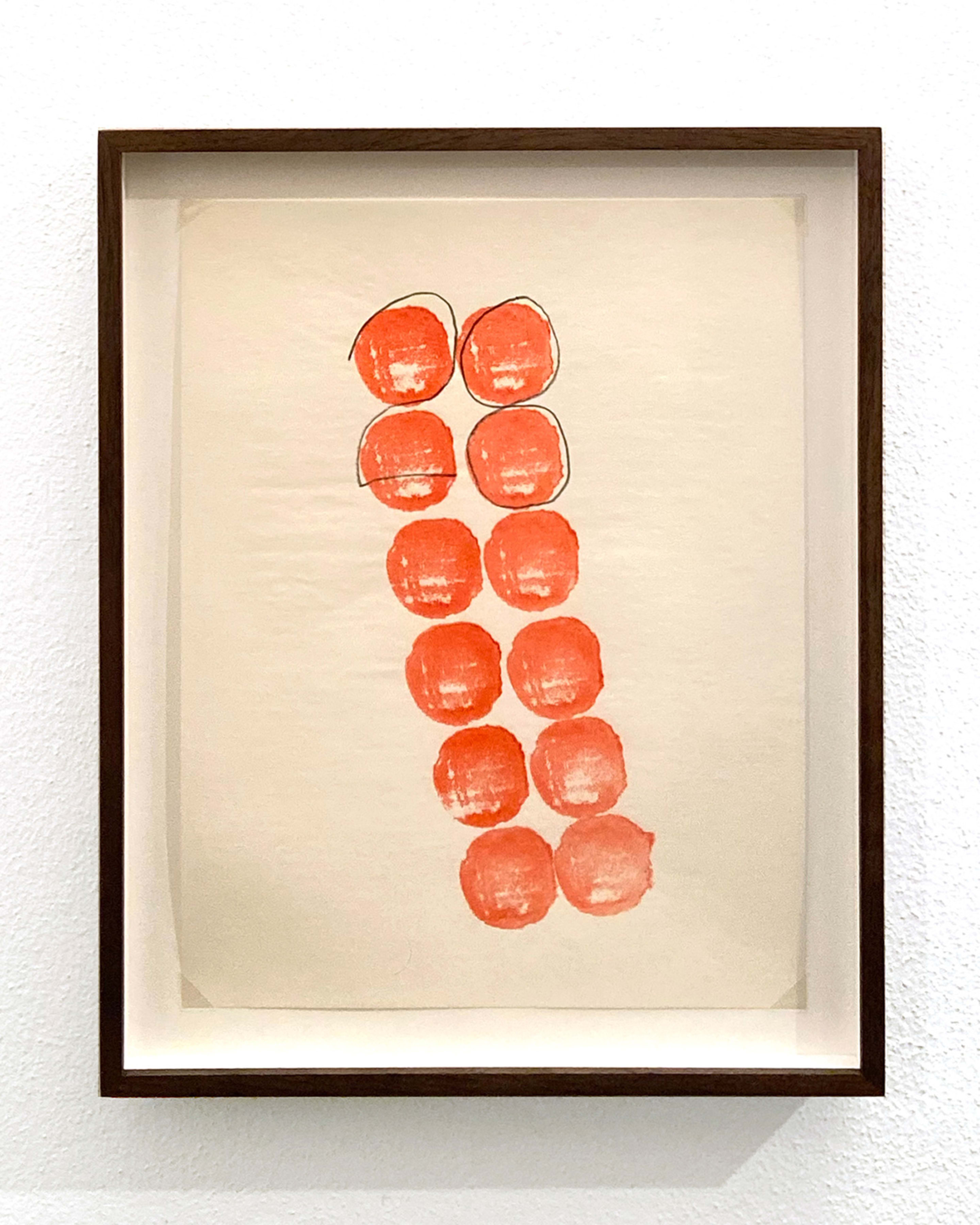
Vegetable ink and graphite on vellum (Set of 4)
33 × 26,7 × 3,8 cm framed each
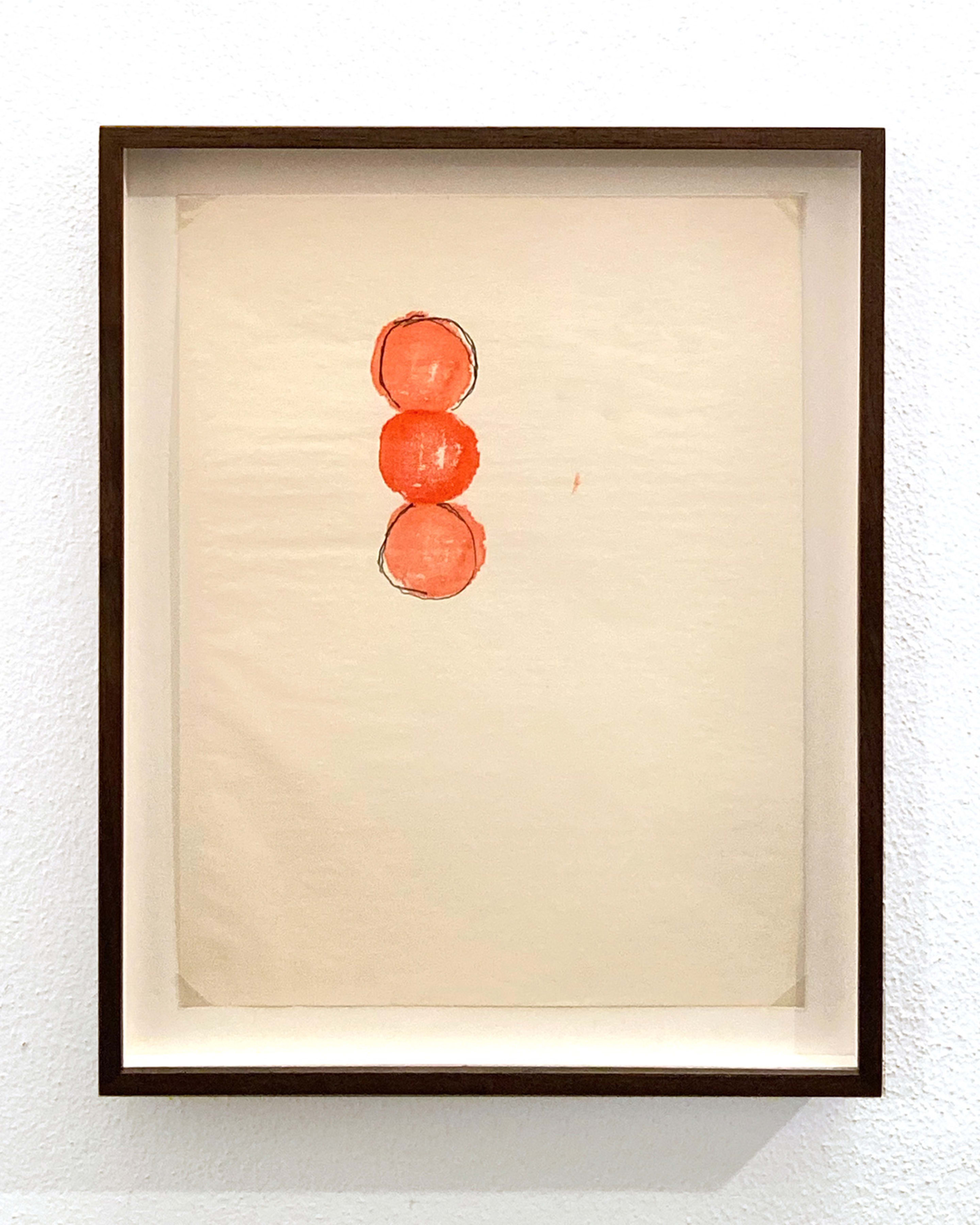
Vegetable ink and graphite on vellum (Set of 4)
33 × 26,7 × 3,8 cm framed each
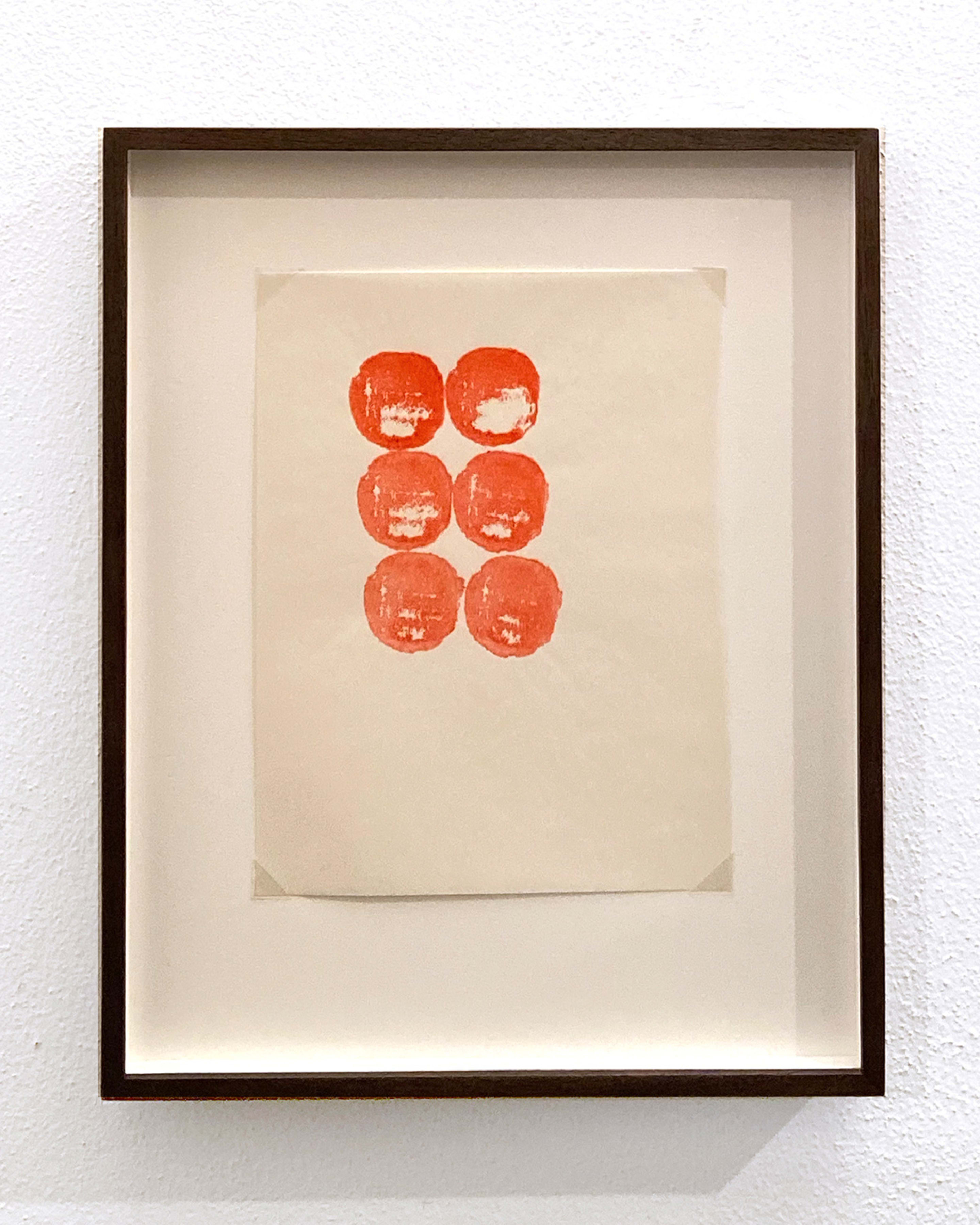
Vegetable ink and graphite on vellum (Set of 4)
33 × 26,7 × 3,8 cm framed each
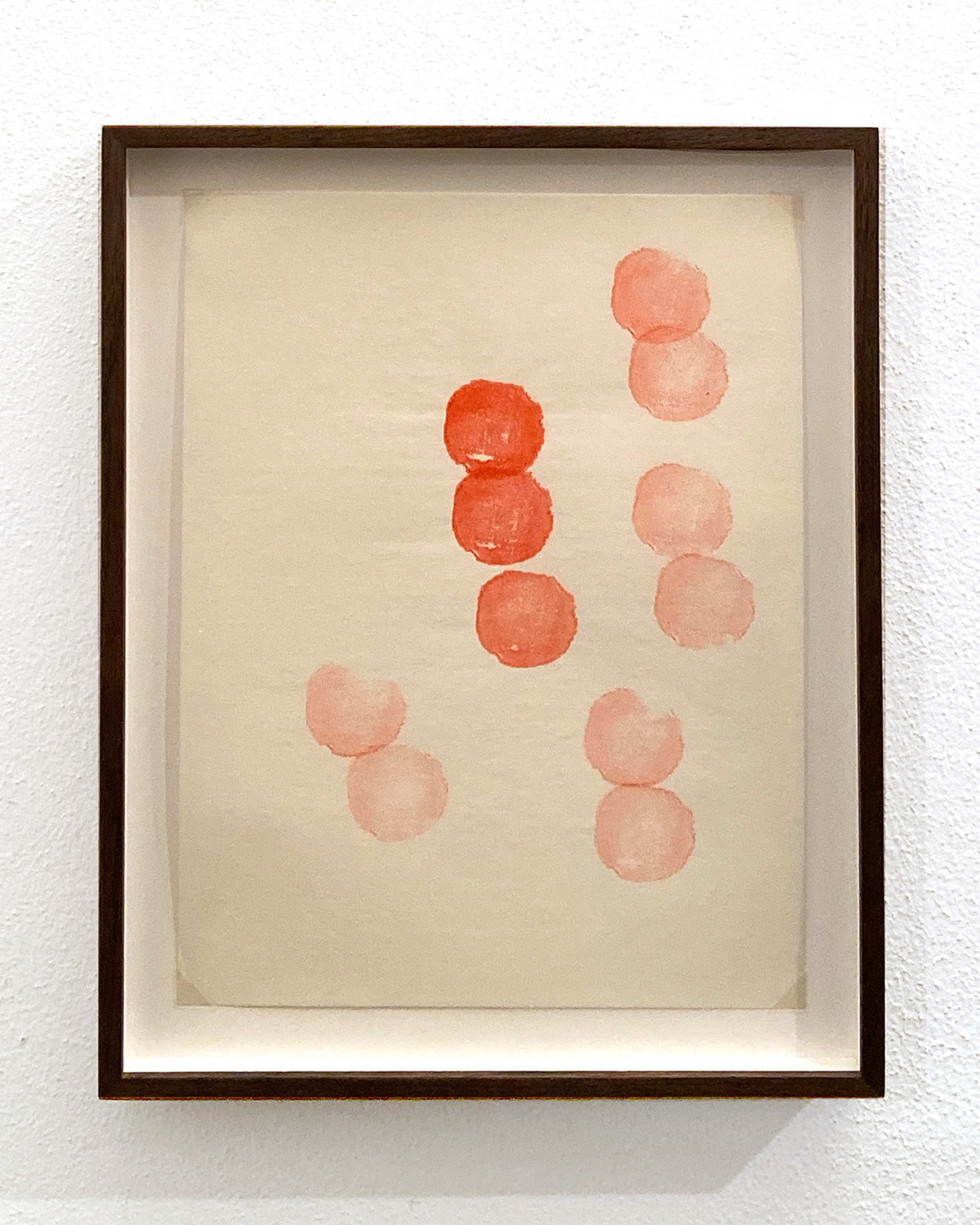
Vegetable ink and graphite on vellum (Set of 4)
33 × 26,7 × 3,8 cm framed each
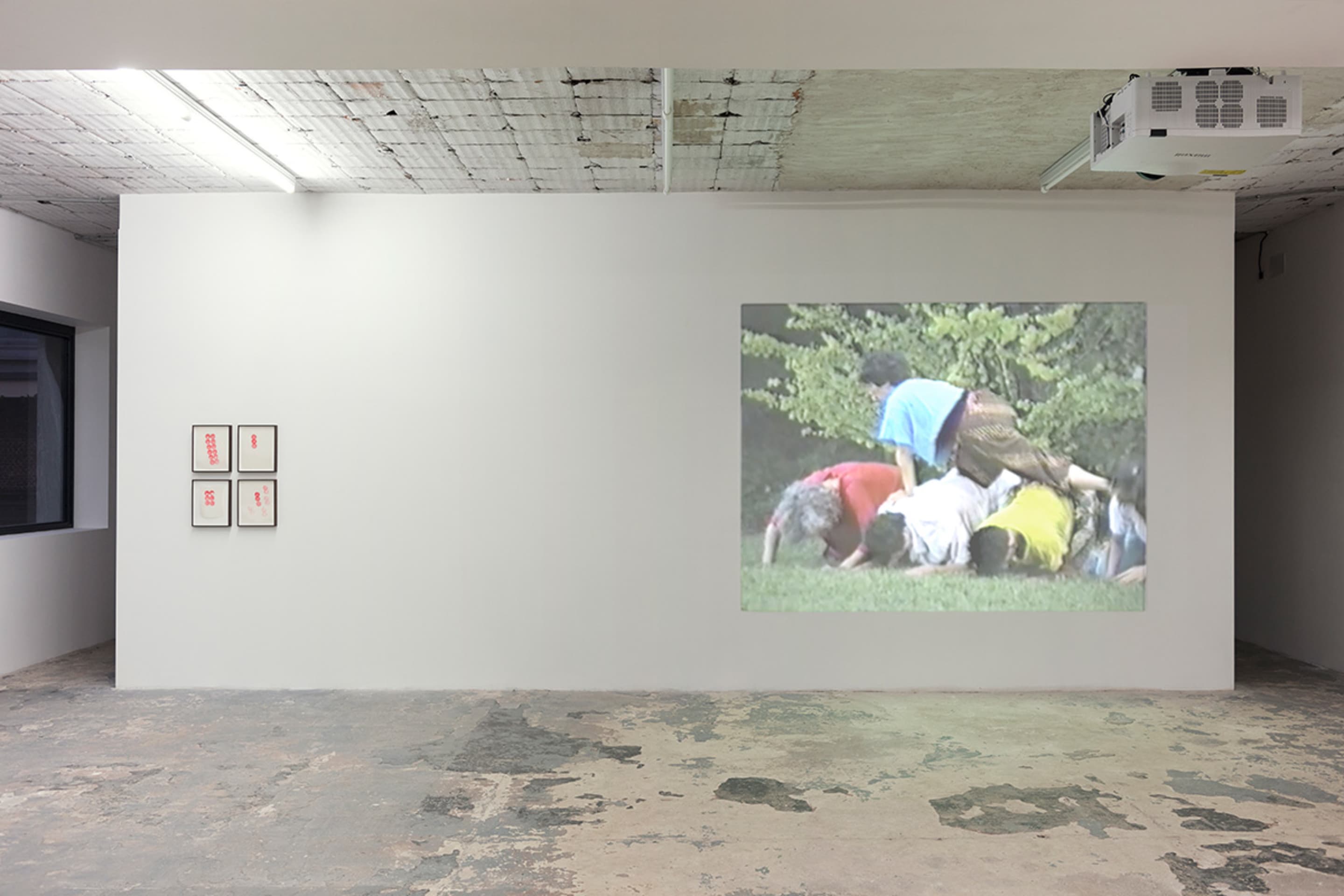
Installation view at ICA Milano
In 2016 Simone Forti and Charlemagne Palestine used Vleeshal as a rehearsal space to work on a new version of their Illuminations series, which was performed there on April 2 and April 3. Both Forti and Palestine had performed in Middelburg before: Forti in 1980, when she participated in the interdisciplinary arts festival ‘Forum’, and Charlemagne Palestine on several occasions, including a solo show at Vleeshal in 1979 as well as various other concerts in Middelburg.
Performance at Vleeshal, Middelburg, Netherlands
Following Simone Forti’s 2016 solo show Here It Comes at Vleeshal, in 2018 Vleeshal and Koenig Books published The Bear in the Mirror, a collection of Forti's stories, prose-poems, drawings, photos, letters, notes, and memories. The artist's book has now been translated in Italian; L'orso allo specchio was published by Kunstverein Publishing and Vleeshal, and produced by Kunstverein Milano with the support of Galleria Raffaella Cortese and Fondazione ICA, Milano in 2020. Click here to learn more about the Italian edition.
